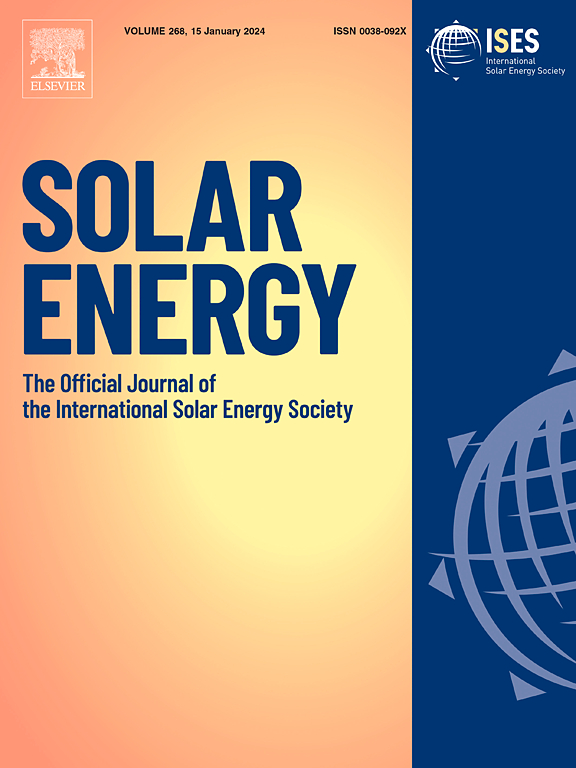Mechanically stacked bifacial III-V/HIT multijunction silicon solar cells optimized with spectral albedo for high efficiency
IF 6
2区 工程技术
Q2 ENERGY & FUELS
引用次数: 0
Abstract
This study explores mechanically stacked tandem solar modules’ design, fabrication, and performance. These modules have an III-V top cell and silicon heterojunction with intrinsic thin-layer (HIT) bottom cells. The top cell includes three layers: GaInP (∼0.5 µm), GaAs (∼3.0 µm), and Ge (∼150 µm). Under standard sunlight (1-sun AM1.5G), the III-V top cell, measuring 1 cm × 1 cm, showed a Voc of 2.74 V, a Jsc of 12.17 mA/cm2, and an efficiency of 29.14 %. Four HIT bottom cells measuring 1.5 cm × 1.5 cm were connected in series to match this voltage. Each HIT cell had a crystalline silicon layer (∼120 µm thick) and very thin amorphous silicon layers (∼5–10 nm) with a transparent conductive oxide (ITO, ∼75 nm). These bottom cells reached a voltage of about 2.70 V. To match currents, backside illumination (albedo) ranged from 0.1-sun to 0.4-sun, while the front side remained at 1-sun. With increased rear illumination, current improved significantly from 8.96 mA/cm2 (0.1-sun) to 17.97 mA/cm2 (0.4-sun), increasing efficiency from 21.27 % to 39.74 %. However, the fill factor slightly decreased from 87.94 % to 81.91 % at higher illuminations due to resistive and recombination losses. Under standard test conditions, the tandem solar module achieved an efficiency of 28.52 %, a current of 11.97 mA/cm2, and a fill factor of 88.26 %. This study clearly shows how mechanical stacking and rear-side albedo illumination effectively enhance the performance of tandem solar cells.
求助全文
约1分钟内获得全文
求助全文
来源期刊

Solar Energy
工程技术-能源与燃料
CiteScore
13.90
自引率
9.00%
发文量
0
审稿时长
47 days
期刊介绍:
Solar Energy welcomes manuscripts presenting information not previously published in journals on any aspect of solar energy research, development, application, measurement or policy. The term "solar energy" in this context includes the indirect uses such as wind energy and biomass
 求助内容:
求助内容: 应助结果提醒方式:
应助结果提醒方式:


